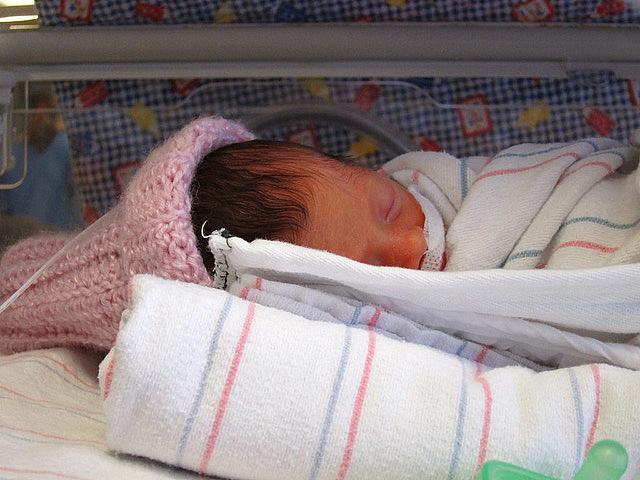As premature births rise, study finds they face higher rates of abuse
With premature births on the rise in the United States, the results of a recent study on infant hospitalizations is especially troubling: Babies born early are more likely to be abused than full-term infants.
Compared to their full-term peers, preemies had 1.6 times the risk of being readmitted to the hospital within their first year for injuries associated with physical abuse and neglect. Babies with long stays in the neonatal intensive care unit (NICU) had 1.8 times the risk of being readmitted for such injuries compared to infants with no stay.
“I wasn’t surprised, partly because I think of maltreatment in a family stress context,” said lead author Susan Mason, an assistant professor of epidemiology and community health at the University of Minnesota School of Public Health. “Having a preterm infant is incredibly stressful. Having an infant in the NICU is incredibly stressful. It’s very disruptive. It’s expensive. And so without a large amount of resources, you can see how this could really strain a family’s capacity to optimally care for a child.”
Mason’s work comes at a time when the national preterm birth rate has been climbing since 2015, after declining from 2007 to 2014, according to the Centers for Disease Control and Prevention (CDC).
In 2017, 9.93 percent of babies born in the U.S. were born before 37 weeks gestation, up slightly from 2016. Full term is considered between 39 and 41 weeks.
And, a new premature birth report card recently released by the March of Dimes, shows that the rates vary by state. Mississippi has the highest rate, with 13.6 percent, while Vermont has the lowest with 7.5 percent. The report also breaks the rates down in each state by counties with the greatest number of births.
Pregnant women who are black, teenagers or over 35 are all at increased risk for preterm birth. Other risk factors include low socioeconomic status, high blood pressure, prior preterm birth, tobacco and alcohol use, and stress.
Babies born early are more likely to have long-term health problems, including cerebral palsy, chronic lung disease and hearing loss, according to the March of Dimes.
Add abuse to this, and the outcomes are troubling. As many as one in three children in the U.S. are abused. Abuse can lead to injury and death, and can have lasting impacts on the child’s health and social wellbeing, including reduced socioeconomic achievement, sexual risk taking, poor mental health, obesity and cardiometabolic disease.
For Mason’s study, published in the Annals of Epidemiology, she found what others have documented prior: NICU babies have higher rates of physical abuse; younger mothers, people on public insurance and parents with less education are all more likely to abuse their babies.
But the methodology she used to arrive at her findings was new.
Mason and her colleagues analyzed birth certificates, discharge records and subsequent infant hospitalizations within 12 months of delivery.
“I thought the most important contribution was that this is a cohort study, which means, even though she did it retrospectively, it’s a group of kids who are followed forward in time to see what happens to them,” said Dr. Desmond Runyan, a professor of pediatrics at the University of Colorado and former executive director of the Kempe Center for the Prevention and Treatment of Child Abuse and Neglect. “And it’s a pretty large sample. And what that means is that there is less risk for bias.”
That Mason looked at hospital data instead of social services data was also “interesting and useful,” Runyan added.
“We don’t know that social service codes are wrong,” he said. “But a lot of people don’t end up getting to social services. But if you have a broken leg or are knocked comatose, it’s a little hard not to go to the hospital.”
While the study underscores the risks faced by preterm babies, Mason said there’s still a huge need for better data to inform health providers, child welfare agencies and policymakers of potential abuse.
“This is a big public health issue, and we’re not treating it like a big public health issue,” Mason said. “For most of our public health issues, we measure them. We have surveillance systems. We know whether the prevalence is going up or down. We know whether one location has a higher prevalence or incidence of that outcome. We do this with cancer, we do this with infectious disease. But we do not do it with maltreatment, with child abuse and neglect, even though it looks like child abuse and neglect predicts so many things of major public health importance, including mortality.”


